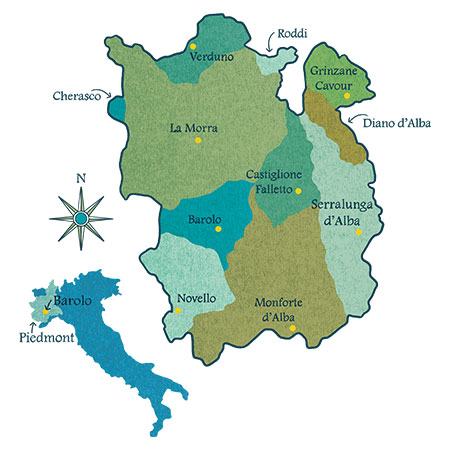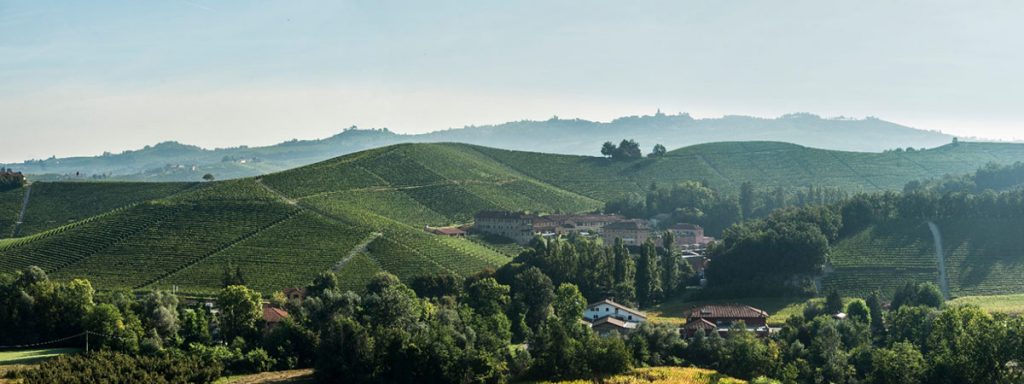At the end of our Barolo blind-tasting panels this year, we noticed a proliferation of wines with the name of one of Barolo’s 11 comunes on the label. The majority came from Serralunga d’Alba, with a few from Monforte d’Alba, La Morra and Barolo. This marks an acceleration of a trend that began a decade ago.
In 2010, the local Consorzio ratified a new map designating 170 single-vineyard sites in the Barolo zone. These sites, known as Menzioni Geografiche Aggiuntive (additional geographical mentions), or MGAs, range in size from a few acres to more than 900 acres, and do not include any ranking in terms of quality. Consumers choosing a bottle of Barolo were faced with differentiating up to 170 different MGA names on the labels.


Map Illustration by Joel Kimmel
The new 2010 rules also included a provision for 11 “super-MGAs,” one for each of Barolo’s 11 townships, or communes. This meant that wines made with grapes coming from vineyards in a single commune, say Serralunga d’Alba, could label that wine Barolo del Comune di Serralunga d’Alba. The category is similar to Burgundy’s villages wines, which sit between Bourgogne Rouge and the single-cru wines. Barolo del Comune wines create a bridge between Barolo classico wines (those made with grapes grown anywhere in the Barolo DOCG zone) and those from one of the 170 single-site MGAs.
The comune category got off to a slow start, with just a handful of Barolo del Comune wines appearing in the years after 2010. Now there are at least 70 Barolo del Comune wines on the market, with more slated for release in the coming years. This is fast-paced change for a traditional region like Barolo.
Producers cite a number of reasons for entering the comune category. Diego Conterno (Monforte d’Alba) and Fratelli Alessandria (Verduno) want their Barolo del Comune wines to express the collective character of their comuni, or their home villages. Other producers believe that some communes, particularly Serralunga d’Alba, have already established a strong brand image that may even outweigh the image of some single-site MGA names.


Just as Burgundy fans might prefer the villages wines of Chambolle-Musigny over those from Gevrey-Chambertin, Barolo lovers can view comune wines as a way to appreciate the characteristics typical of wines from Barolo’s different communes–Serralunga’s power, La Morra’s perfume, Castiglione Falletto’s finesse, and so on. Comune wines can provide a useful framework to explore Barolos from the 170 single-site MGAs.
Comunist Evolution, the full version of this story, appears in the December 2020 issue of W&S Magazine. Subscribers can access the full story here.
is the Italian wine editor at Wine & Spirits magazine.
This is a W&S web exclusive. Get access to all of our feature stories by signing up today.
















